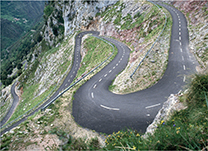Figure 14 A wheel and axle is a type of simple machine consisting of two disks or cylinders with different radii. A The steering mechanism used in a car is a wheel and axle. B When turning a screw with a screwdriver, the input force is applied to the larger-radius handle and the screw is turned by the smaller- radius shaft.

Wheel and Axle
Are you excited about “getting behind the wheel” of a car in a few years? To be scientifically correct, you'll actually be getting behind a wheel and axle, a type of simple machine. A wheel and axle is a simple machine that consists of two disks or cylinders, each one with a different radius. A steering wheel, as shown in Figure 14A, consists of a large wheel attached to a narrow axle.
The outer disk is the wheel and the inner cylinder is the axle. The wheel and the axle rotate together as a unit. In a car, the steering wheel the driver turns is the wheel, and the shaft that rotates with it is the axle.
Depending on the purpose of the machine, the input force can be exerted on the wheel or the axle.  To calculate the ideal mechanical advantage of the wheel and axle, divide the radius (or diameter) where the input force is exerted by the radius (or diameter) where the output force is exerted. Though it may not appear so, a wheel and axle is similar to a lever, with the center of the two cylinders acting as the fulcrum.
To calculate the ideal mechanical advantage of the wheel and axle, divide the radius (or diameter) where the input force is exerted by the radius (or diameter) where the output force is exerted. Though it may not appear so, a wheel and axle is similar to a lever, with the center of the two cylinders acting as the fulcrum.
A wheel and axle machine can have a mechanical advantage greater than 1 or less than 1. For a steering wheel, the driver applies force to the larger radius of the wheel. Because the input distance is larger than the output distance, a steering wheel has a mechanical advantage greater than 1.
Figure 15 This long and winding road acts like a type of simple machine known as an inclined plane. Applying Concepts As the road becomes steeper, how does its mechanical advantage change?

Inclined Planes
Imagine how hard it would be to walk straight up the side of a steep hill. By following the gentler slope of a winding trail, it is easier to walk up the hill. Why is that so? It is because the required input force is decreased when the input distance is greater than the output distance. Remember, however, that although it is easier to reach the top of a hill using the trail, you'll have to walk a longer distance. As shown in Figure 15, switchback roads are often used to make steep mountain passes easier for automobiles to climb.




